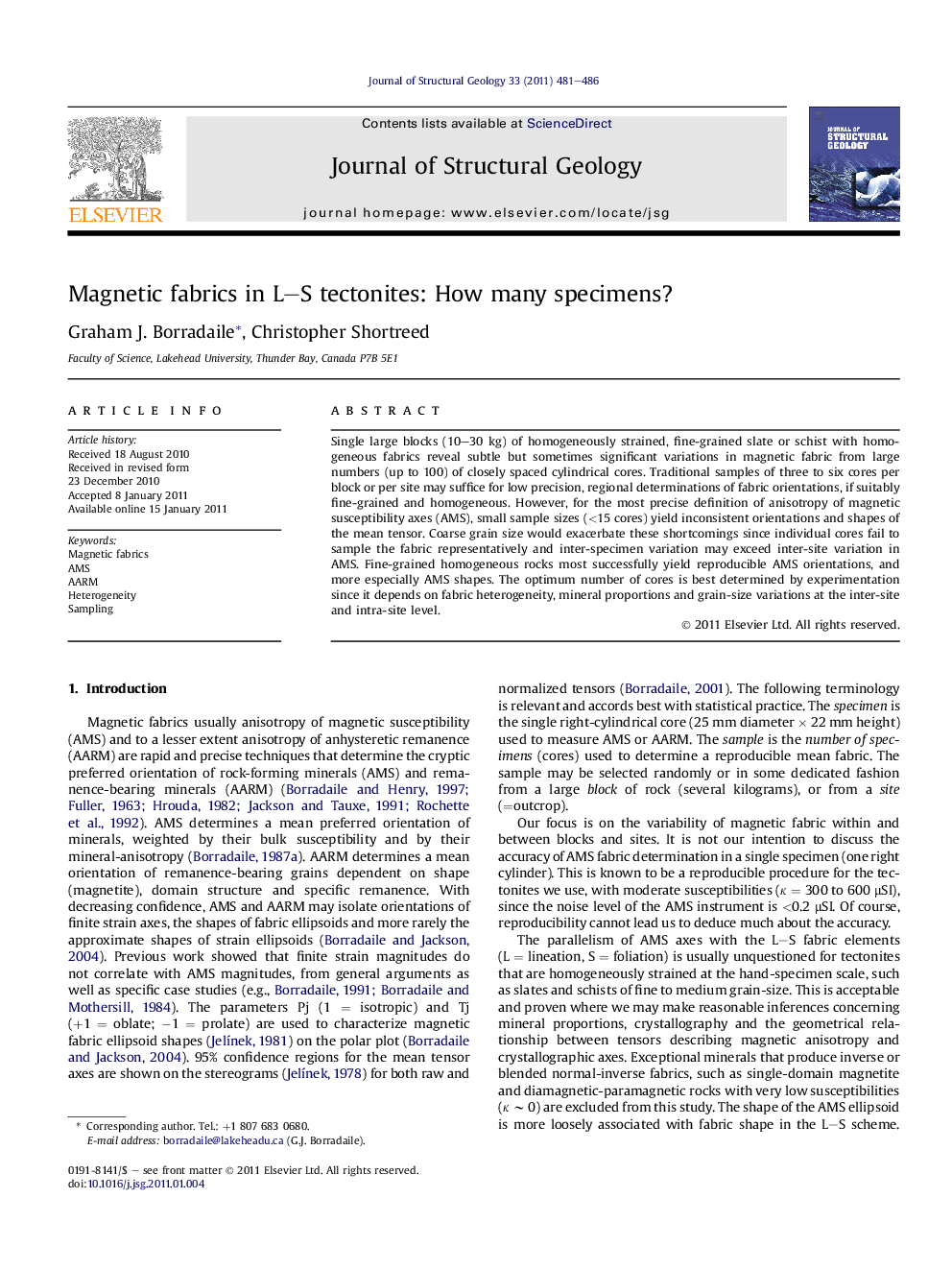| Article ID | Journal | Published Year | Pages | File Type |
|---|---|---|---|---|
| 4733366 | Journal of Structural Geology | 2011 | 6 Pages |
Single large blocks (10–30 kg) of homogeneously strained, fine-grained slate or schist with homogeneous fabrics reveal subtle but sometimes significant variations in magnetic fabric from large numbers (up to 100) of closely spaced cylindrical cores. Traditional samples of three to six cores per block or per site may suffice for low precision, regional determinations of fabric orientations, if suitably fine-grained and homogeneous. However, for the most precise definition of anisotropy of magnetic susceptibility axes (AMS), small sample sizes (<15 cores) yield inconsistent orientations and shapes of the mean tensor. Coarse grain size would exacerbate these shortcomings since individual cores fail to sample the fabric representatively and inter-specimen variation may exceed inter-site variation in AMS. Fine-grained homogeneous rocks most successfully yield reproducible AMS orientations, and more especially AMS shapes. The optimum number of cores is best determined by experimentation since it depends on fabric heterogeneity, mineral proportions and grain-size variations at the inter-site and intra-site level.
► Traditional sample sizes of 6 cores are inadequate for most AMS studies. ► Samples of >100 closely spaced cores may fail to produce precisely equivalent estimates of AMS, even in ideal rocks. ► Intra-specimen variation of magnetic fabric exceeds inter-site variation even when 15 cores are used per specimen. ► Regional AMS studies require a pilot investigation to determine the optimum sample size for a given fabric, mineralogy and grain-size.
